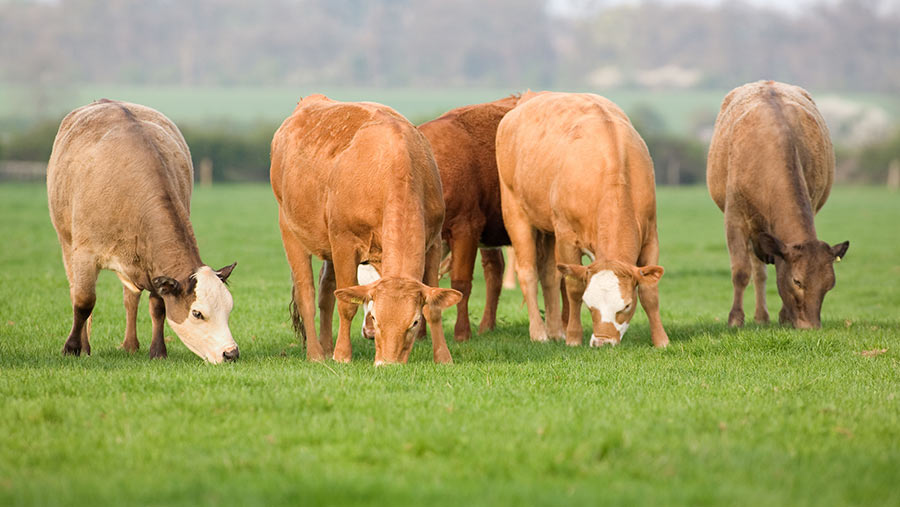Livestock farming links to climate change solution
 © Tim Scrivener
© Tim Scrivener British livestock production can contribute to global cooling and should form part of the solution to climate change, an environment summit has heard.
The Countryside COP summit has been organised to raise rural environmental issues ahead of the global COP26 talks in November.
At the webinar, Cranfield University’s Michelle Cain explained an alternative method of calculating the Global Warming Potential (GWP) of a greenhouse gas which could cast livestock production in a different light.
The commonly used measure of GWP-100 provides a reliable method of calculating the impact of a gas like carbon dioxide over a 100-year period.
This is because the gas persists in the atmosphere for hundreds or even thousands of years. However, methane breaks down quickly and is only half as potent after a decade in the atmosphere, Dr Cain explained.
See also: Prince Charles calls for meat consumption cut ahead of COP26
That means converting methane to a carbon dioxide equivalent under the GWP-100 method creates a false impression of its persistence and, therefore, long-term impact.
Instead, Dr Cain said a method known as GWP* that accounted for the short half-life of methane more accurately reflected the effect of the gas on global warming.
Metrics
Yorkshire-based beef producer Andrew Loftus said use of this metric would help to alter a commonly held view of livestock’s role in climate change.
Mr Loftus said that GWP-100-based tools, like the BBC’s climate change food calculator, made the impact of beef look 10 times worse than other foods.
The BBC’s calculator was also based on averaged global production figures, not just the UK’s, he said.
It is left to the fine print to acknowledge emissions from UK farms are actually 40% lower than global averages, Mr Loftus said.
Using the GWP* method and factoring in greater efficiencies since the 1970s, demonstrate UK herds made a lower contribution to methane in the atmosphere, he suggested.
The revised figures actually equate to a small amount of global cooling, Mr Loftus said. But he warned that did not mean that beef production was off the hook as far as climate change efforts were concerned.
Efficiency improvements
Instead, the more accurate calculation method could be used to highlight variability in efficiencies on farms and where improvements could be made.
“There are always ways to make farms more efficient and this could drive methane production down even further,” he said.
In the dairy sector, investment funding could be used to cover dairy buildings and install methane extractors, Mr Loftus suggested.
For beef and lamb systems, investment could fund improved genetics to produce meat from lower inputs or feed additives that cut gut methane production, he added.
The alternative to investing in better methods is to slash herd numbers.
But this will simply draw in beef from overseas with poorer environmental credentials and an opportunity to tackle climate change will be missed, said Mr Loftus.
